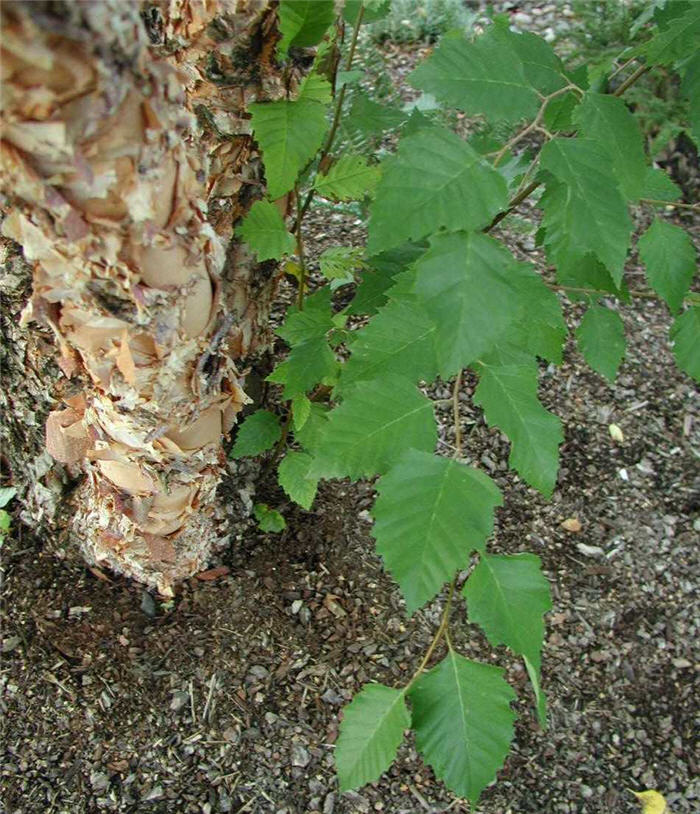| Botanical Name: Betula nigra | |
| Common Name: River Birch |

-
Anatomy
-
Culture
-
Design
Plant Type
Tree
Height Range
25-40'
Flower Color
n/a
Flower Season
n/a
Leaf Color
Green
Bark Color
Red, Tan
Fruit Color
Brown
Fruit Season
Summer
Sun
Full, Half, Shade
Water
High, Extra in Summer
Growth Rate
Moderate
Soil Type
Clay, Loam, Rocky
Soil Condition
Average, Rich, Poor, Well-drained, Moist
Soil pH
Acid, Neutral, Basic
Adverse Factors
n/a
Design Styles
Formal, Ranch, Woodland
Accenting Features
Fall Color, Multi-trunk Tree, Specimen
Seasonal Interest
Winter, Summer, Fall
Location Uses
Background, Lawn, Patio, Walls / Fences
Special Uses
Screen, Mass Planting, Shade Tree
Attracts Wildlife
Butterflies
Information by: Stephanie Duer
Photographer:
Photographer:
-
Description
-
Notes
River Birch is a deciduous tree with attractive, buff-colored peeling bark and small, finely toothed leaves. It grows 30 to 40 feet tall and 20 to 30 feet wide. Available as a single or multi-stemmed tree. Leaves are green in the summer, with strong yellow fall color. Buff to brown catkins hang in little clusters during the summer months, persisting into winter. Tolerates moist soils, so place it near the lawn where it will benefit from the supplemental water without injury.
Grow in sun to part shade, in well drained soil. Prefers soils with some organic matter. It resists bronze birch borer and will tolerate wetter soils than the B. pendula. Not a tree for a dry landscape, but with good soil and placement, it could be a nice addition to a moderately watered landscape.